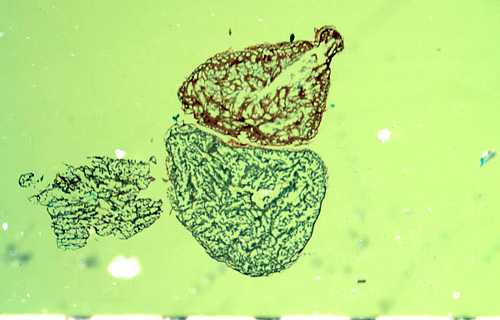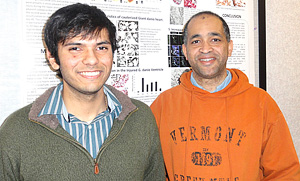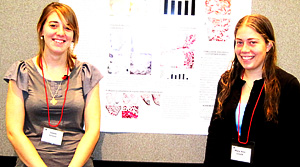Fishing for Answers
April 13, 2011

More than $300 billion is spent every year to fight heart disease in the United States, but as the nation’s leading cause of death, the true cost of heart disease is far greater. According to Pascal Lafontant, assistant professor of biology at DePauw, tiny fish may hold answers to this growing epidemic.
Following a heart attack, the human heart replaces damaged muscle with an emergency scaffolding of scar tissue. This scar tissue works well as a patch, but it is stiff and unable to contract like the original muscle, leaving a survivor with a heart that is weakened and vulnerable to more problems.
Facing a similar trauma, some species of fish such as zebrafish have a leg up on their mammalian friends. Unlike humans, they are able to generate new cardiac cells to rebuild a heart that’s just as strong as ever. Lafontant is studying these fish in the hope that they might unlock a similar process in humans.
“The fish hearts have molecular and cellular programs that humans do not have or cannot activate,” Lafontant explains. “We are teasing out the complex repair processes that occur in fish hearts. What we learn may be used to develop new therapies that will enhance a human heart’s ability to heal and regenerate after the major loss of heart cells.”
 Lafontant (r) and
Lala Tanmoy Das (l), a junior from Kolkata, India, made a recent trip to
Washington, D.C., to present their heart research at Experimental Biology (EB)
2011, an annual conference for biologists in multiple fields. There, Lafontant
presented data on the tissue remodeling that occurs during regeneration,
including a new model of heart regeneration in
fish that involves inflammation and collagen deposition – trademark signs of
heart attacks in humans.
Lafontant (r) and
Lala Tanmoy Das (l), a junior from Kolkata, India, made a recent trip to
Washington, D.C., to present their heart research at Experimental Biology (EB)
2011, an annual conference for biologists in multiple fields. There, Lafontant
presented data on the tissue remodeling that occurs during regeneration,
including a new model of heart regeneration in
fish that involves inflammation and collagen deposition – trademark signs of
heart attacks in humans.
Das, a biology and biochemistry double major and member of DePauw’s Science Research Fellows, won an undergraduate research competition at EB 2011 that included students from Cornell University, Johns Hopkins University, McGill University and the University of British Columbia. He presented a poster showing evidence of muscle regeneration in the cellular cycle of fish hearts. He and Lafontant worked with a collaborator at the University of Houston to image this process with an electron microscope.
Das began working with Lafontant in fall 2009 when posters outside Lafontant’s office caught his interest. How is now one of seven students working in the lab on various aspects of growth, repair and regeneration of the heart.
“The heart fascinates me because it is such a small organ, and yet so important to the entire organism,” Das says.
 Lafontant’s
lab has a history of sending students to top-flight conferences. Jamie A.
Grivas ’10 and Benjamin L. Golden ’10 attended EB 2009 in New
Orleans, and last year Grivas (l) and Mary Ann Lesch ’10 (r) presented at the Society
of Integrative and Comparative Biology in Seattle.
Lafontant’s
lab has a history of sending students to top-flight conferences. Jamie A.
Grivas ’10 and Benjamin L. Golden ’10 attended EB 2009 in New
Orleans, and last year Grivas (l) and Mary Ann Lesch ’10 (r) presented at the Society
of Integrative and Comparative Biology in Seattle.
Research, Lafontant says, is a long road with no guarantee of meaningful findings. But when students such as Das have persevered and presented their work to the scientific community, those breakthroughs are just as rewarding for him.
“What I enjoy most about working with students is when they realize that the work they are doing can be of significant value – the great joy when an experiment finally works, when their findings suddenly come into focus and they finally understand exactly how a biological process works.”
Back